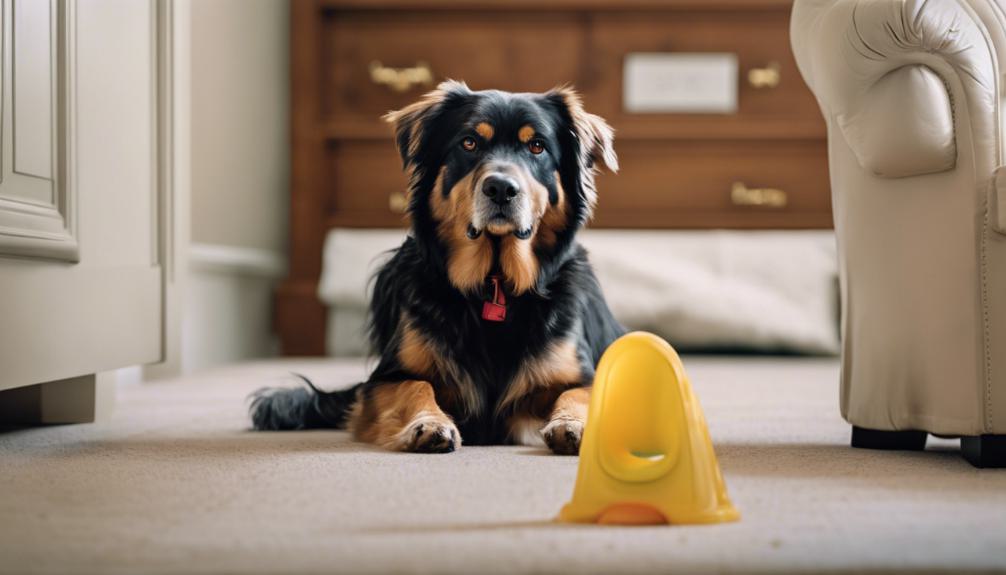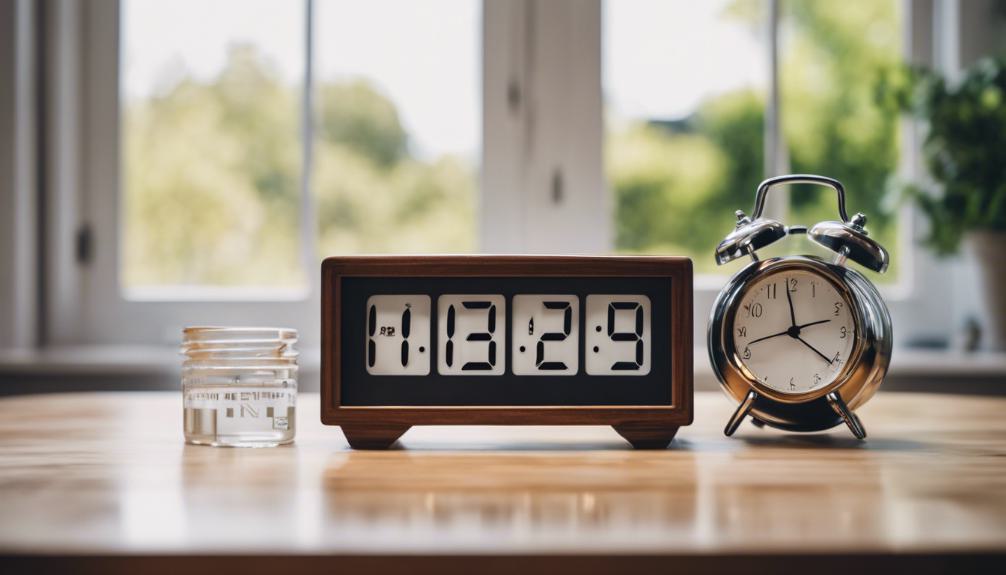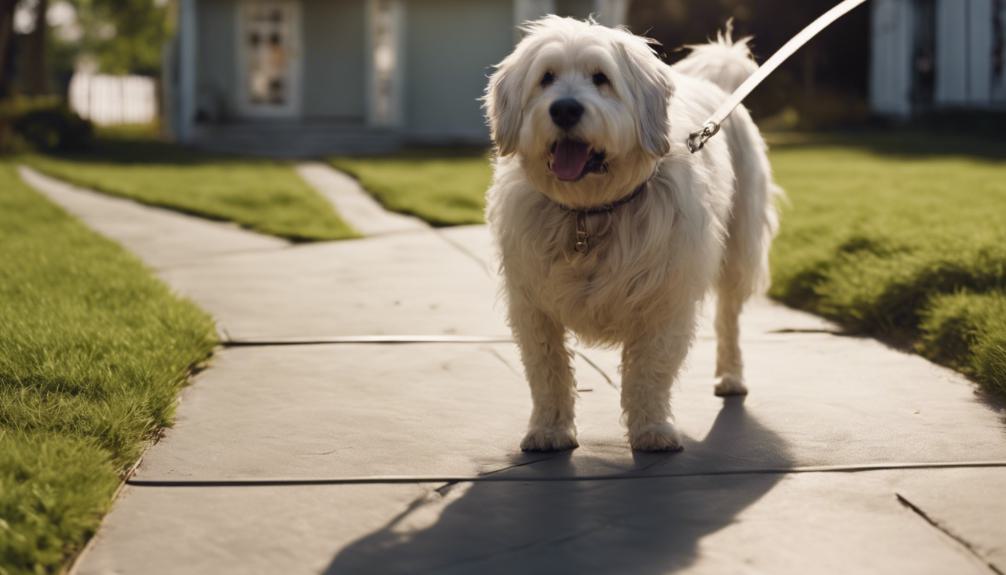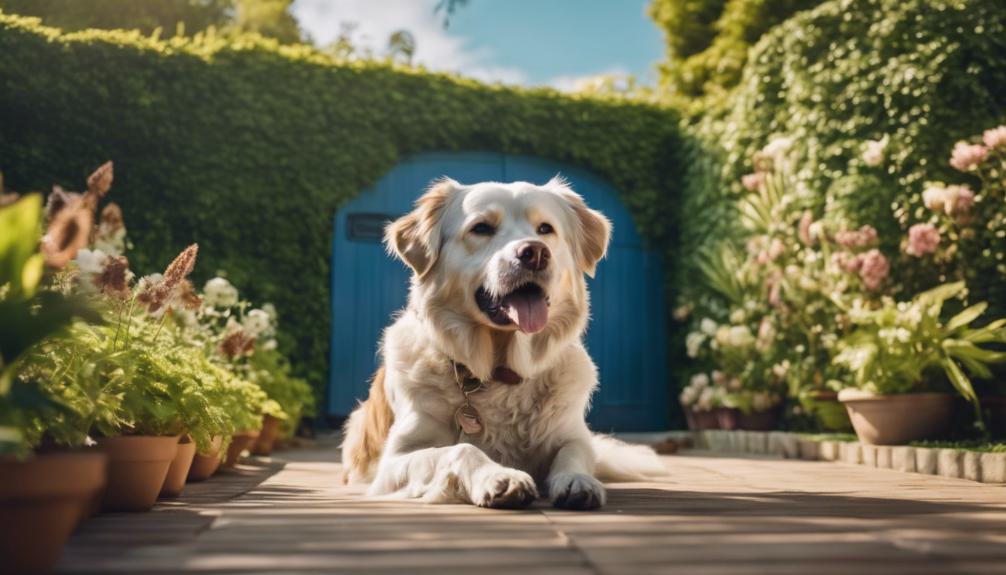How to Potty Train a Senior Dog? Efficient Training Guide
To potty train a senior dog efficiently, recognize their aging behavior changes and physical limits. Be patient and adapt routines. Stick to consistent potty schedules. Minimize distractions during bathroom times. Use a leash for outdoor breaks and give rewards for success. Enzymatic odor removers help with accidents. Crate training creates a safe space. New habits need patience, monitoring, and positive reinforcement. Focus on routines, consistency, and rewarding good behavior to see progress. Dig deeper for additional methods to enhance your senior dog’s training success.
Understanding Senior Dog Behavior
As a senior dog owner, grasping your dog’s behavior is vital for successful potty training. Older dogs may experience changes in bladder control due to aging, leading to the need for more frequent potty breaks.
Recognizing your senior dog’s behavior patterns is essential in adapting your training routine to accommodate any physical limitations they may have. Patience is key when potty training senior dogs, as they might take longer to grasp new routines or have medical conditions that affect their training progress.
Importance of Consistency in Training
Consistency in training is key when potty training your senior dog. Establishing a regular routine for potty breaks helps your furry friend understand when and where to go.
Consistent Routines Yield Results
Establishing a regular routine is essential for successfully potty training a senior dog. Senior dogs thrive on predictable schedules, making it easier for them to understand at which point and where to go potty.
Consistency in routines, including feeding times and bathroom breaks, is key to their training success. By maintaining a steady walking and bathroom routine, you can help your senior dog grasp the concept of potty training more effectively.
Remember, repetition and consistency play pivotal roles in instilling good potty habits in senior dogs. Stick to the schedule, be patient, and watch as your furry friend learns to do their business in the right place at the right time.
Consistent routines yield results in instilling good potty habits in senior dogs.
Repetition Reinforces Good Habits
To reinforce good habits in potty training your senior dog, maintain a consistent routine of taking them outside at the same times each day.
Repetition is key in training senior dogs, as it helps establish a reliable schedule and reinforces desired behaviors. Consistently repeating verbal cues or commands during potty breaks is essential for training senior dogs, as it actively reinforces the positive behavior you want to see in your senior dog.
Important reinforcement, coupled with repetition, is vital for effectively training senior dogs. By sticking to a routine and consistently providing praise or rewards for successful potty breaks, you’re creating a structured environment that aids in the efficient potty training of your senior dog.
Utilizing Enzymatic Pet Odor Eliminators

When potty training your senior dog, utilizing enzymatic pet odor eliminators is essential. These products break down urine molecules to effectively eliminate odors at the source, helping to maintain a clean and fresh-smelling home.
Odor Elimination Importance
For important odor elimination when potty training an older dog, consider utilizing enzymatic pet odor eliminators. These products break down urine molecules to eliminate odors at the source, preventing re-marking and reinforcing potty training efforts.
Enzymatic cleaners are also effective in removing lingering smells that can attract dogs to repeat accidents. They’re safe to use on various surfaces like carpets, floors, and furniture.
Specifically designed to target and remove pet urine stains and odors, enzymatic pet odor eliminators play a vital role in maintaining a clean environment during the potty training process. By using these products, you can effectively tackle odors and support your senior dog‘s learning journey.
Choosing Effective Products
Consider incorporating enzymatic pet odor eliminators to effectively tackle and eliminate urine odors at their source, aiding in maintaining a clean environment and supporting your senior dog’s potty training progress. These products break down urine molecules, neutralizing ammonia and preventing repeat accidents. Enzymatic cleaners are safe for pets and children once dry, making them ideal for homes with senior dogs. They are versatile, working on carpets, hardwood floors, and furniture. By using enzymatic pet odor eliminators, you can reinforce proper potty training behaviors in older dogs, creating a more pleasant living space for both you and your furry companion.
| Enzymatic Pet Odor Eliminators | ||
|---|---|---|
| Break down urine molecules | Safe for pets and children once dry | Neutralize ammonia, prevent revisits |
| Effective on various surfaces | Reinforce proper potty training | Prevent repeat accidents |
Implementing Crate Training Techniques
Introduce the crate gradually to your senior dog, helping them associate it positively as a safe and comfortable space. When implementing crate training techniques for your senior dog, follow these tips:
- Start Slow: Allow your senior dog to explore the crate at their own pace.
- Use Treats: Encourage your dog to enter the crate by offering treats and praise.
- Proper Sizing: Make sure the crate is the right size for your senior dog to maximize comfort.
- Supervision: Utilize the crate if you can’t watch your dog closely to prevent accidents.
Establishing a Strict Bathroom Schedule

After implementing crate training techniques, the next step in potty training your senior dog is establishing a strict bathroom schedule. Training an older dog involves setting specific times for bathroom breaks based on their age and health needs.
It’s essential to monitor signs of needing to go out, like restlessness or circling, and adjust the bathroom schedule accordingly. Follow a consistent routine for feeding, water intake, and bathroom breaks to regulate elimination.
Remember to keep a bathroom log to track your senior dog’s potty habits. This log will help you make necessary adjustments to the schedule to guarantee successful potty training. By regulating elimination through a strict bathroom schedule, you’ll make significant progress in training your senior dog.
Managing Distractions During Potty Time
To minimize distractions during potty time, designate a quiet area specifically for your senior dog’s elimination needs. Follow these tips to help your adult dog focus when it needs to go outside:
- Keep other pets away during potty breaks to prevent competition or distractions.
- Avoid using electronic devices or engaging in play during potty training sessions.
- Maintain a calm and focused environment to help your senior dog concentrate on the task at hand.
- Create a routine for potty breaks to reduce the likelihood of distractions and help your dog stay focused.
Leash Training for Outdoor Bathroom Breaks

When taking your senior dog outside for bathroom breaks, using a leash is essential to maintain control and guidance. Leash training helps prevent wandering and keeps your dog focused on the task at hand. It allows you to guide your senior dog to the designated potty area for consistency.
By implementing leash training during bathroom breaks, you can reinforce good behavior and establish a routine. Supervising your senior dog on a leash outdoors not only prevents accidents but also promotes successful potty training.
Positive Reinforcement for Successful Training
Implementing positive reinforcement techniques is key to successfully training your senior dog for potty breaks. Positive reinforcement involves rewarding desired behaviors, like going potty outside, to encourage repetition.
Here are some tips to help you effectively use positive reinforcement in your senior dog’s potty training:
- Reward Promptly: Give your senior dog the reward immediately after they go potty outside to reinforce the behavior.
- Use Varied Rewards: Offer treats, praise, or playtime to keep the positive reinforcement engaging for your senior dog.
- Stay Consistent: Consistency is pivotal in behavior modification; make sure you reward every successful potty break.
- Strengthen Your Bond: Positive reinforcement not only aids in potty training but also enhances the bond between you and your senior dog.
Adapting Older Dogs to New Habits

Successfully adapting older dogs to new habits requires patience, consistency, and a profound grasp of their needs and behaviors. When training senior dogs, establishing a regular potty schedule is essential. By monitoring signs like restlessness or sniffing, you can anticipate when your older dog needs to go out, reducing the likelihood of accidents.
Positive reinforcement, such as treats or praise, helps reinforce good behavior and encourages your senior dog to follow the new potty routine. Comprehending any underlying medical issues that may contribute to accidents is also vital for successful training. Creating a comfortable and familiar potty area for your older dog can further facilitate the adaptation process.
With dedication and the right approach, you can effectively teach an old dog new potty habits.
Frequently Asked Questions
How Do You Potty Train a Senior Dog?
To potty train a senior dog, establish a consistent routine for potty breaks and provide easy outdoor access. Use positive reinforcement and patience. Consider belly bands or dog diapers for incontinence. Remember, accidents may be due to medical issues.
Can a Dog Be Too Old to Potty Train?
No, a dog can never be too old to potty train. With patience and consistency, older dogs can still learn new habits. Consulting a vet for any health issues affecting potty training is important. More frequent potty breaks may be necessary.
How Do You Train an Older Dog to Stop Peeing in the House?
To train an older dog to stop peeing in the house, establish a consistent potty break schedule, use positive reinforcement, supervise closely for cues, and consider temporary solutions like belly bands. Address medical concerns and provide ample opportunities for outdoor breaks.
How Do You Stop a Dog From Peeing and Pooping in the House?
To prevent accidents, take your senior dog outside frequently, especially after meals and naps. Monitor for signs like sniffing or circling. Clean up messes promptly with enzymatic cleaners. Stay patient and consistent in your training approach.
Conclusion
To sum up, housetraining a senior dog may require patience and consistency, but with the right techniques and positive reinforcement, it can be done successfully.
By grasping your dog’s behavior, sticking to a strict schedule, and using tools like enzymatic odor eliminators, you can help your furry friend adapt to new habits.
Remember, older dogs can learn new tricks too, so keep up with the training and soon enough, accidents will be a thing of the past.

